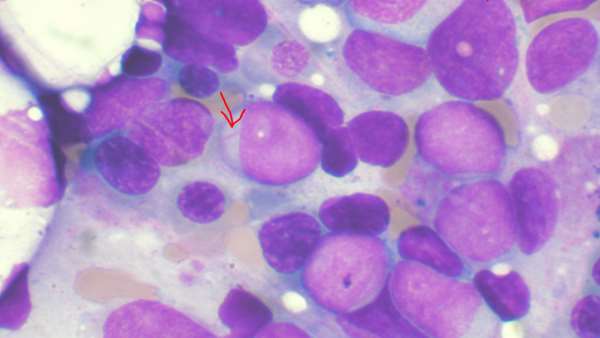New therapeutic approach against leukemia
Leukemia frequently originates from the so-called leukemic stem cell, which resides in a tumor promoting and protecting niche within the bone marrow. Scientists from the Max Planck Institute of Biochemistry in Martinsried, Germany, have found a new way to make these cells vulnerable by specifically dislodging these cells from their niches.
Leukemia frequently originates from the so-called leukemic stem cell, which resides in a tumor promoting and protecting niche within the bone marrow. Scientists from the Max Planck Institute of Biochemistry in Martinsried, Germany, have found a new way to make these cells vulnerable by specifically dislodging these cells from their niches.
Since blood cells have a limited lifespan, are lost during bleeding or are used up during infections, they must be replaced continuously. This supply is ensured by the so-called hematopoietic stem cells in the bone marrow. These cells can develop into any type of blood cell.
Since blood cells have a limited lifespan, are lost during bleeding or are used up during infections, they must be replaced continuously. This supply is ensured by the so-called hematopoietic stem cells in the bone marrow. These cells can develop into any type of blood cell.
In chronic myeloid leukemia, the hematopoietic stem cell undergoes a genetic mutation by recombining chromosome 9 and 22. As a result, gene building blocks fuse that would otherwise not be in contact with each other. The incorrectly assembled chromosome is called a Philadelphia chromosome and harbors the construction manual for the so-called BCR-ABL oncogene. This causes the leukemic stem cell to behave selfishly and divide at the expense of healthy blood stem cells.
A leukemic stem cell creates an environment termed the malignant niche that ensure its survival and proliferation. To remain in this tumor-promoting niche, the leukemic stem cell uses so-called integrins to attach itself to a scaffold of extracellular proteins, the so-called extracellular matrix, and to neighboring cells. In the leukemic stem cell, the activity and function of the integrins is facilitated by an intracellular protein called Kindlin.
Peter Krenn, first author of the study, explains: "The isoform Kindlin-3 is only used by blood cells. If mice harbor leukemic stem cells that lack Kindlin-3, they do not develop leukemia. Without Kindlin-3 and active integrins, the leukemic stem cells cannot attach themselves to their niche environment and are released from the bone marrow into the blood. Since they cannot home elsewhere either, they remain in the blood. There the leukemic stem cells lack the urgently needed support, which they usually receive from the niche, and die.
Reference:https://medicalxpress.com/news/2020-10-therapeutic-approach-leukemia.html




ارسال به دوستان